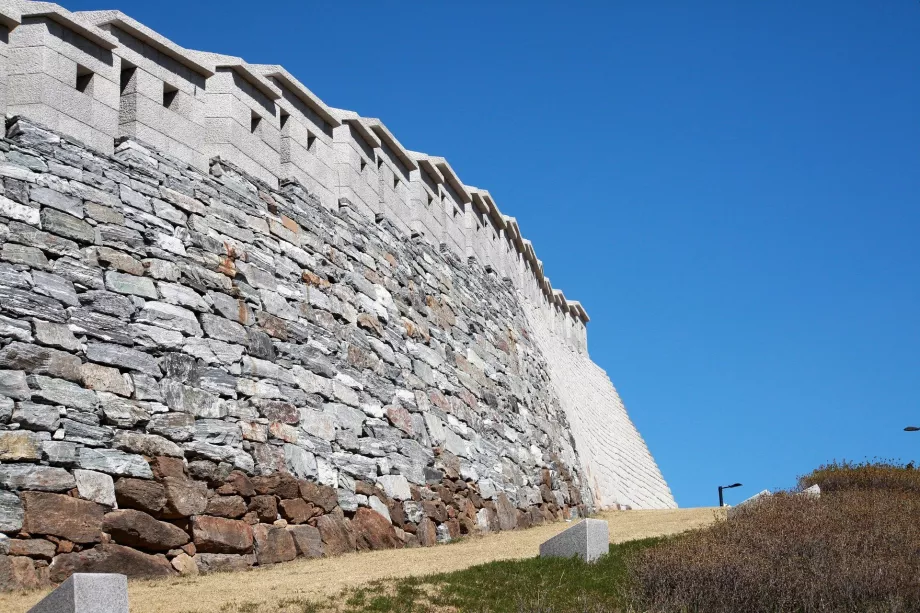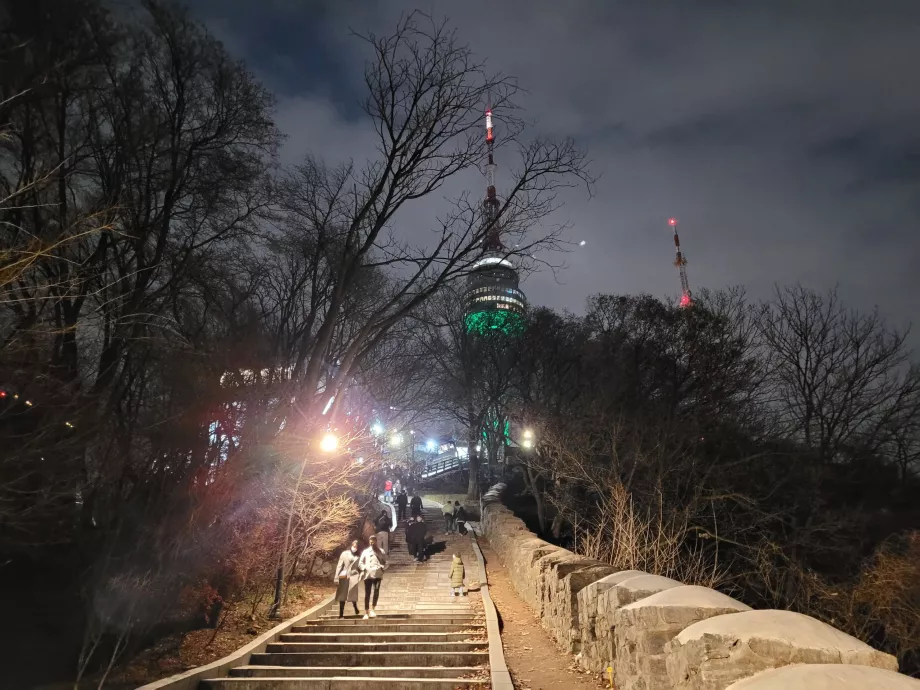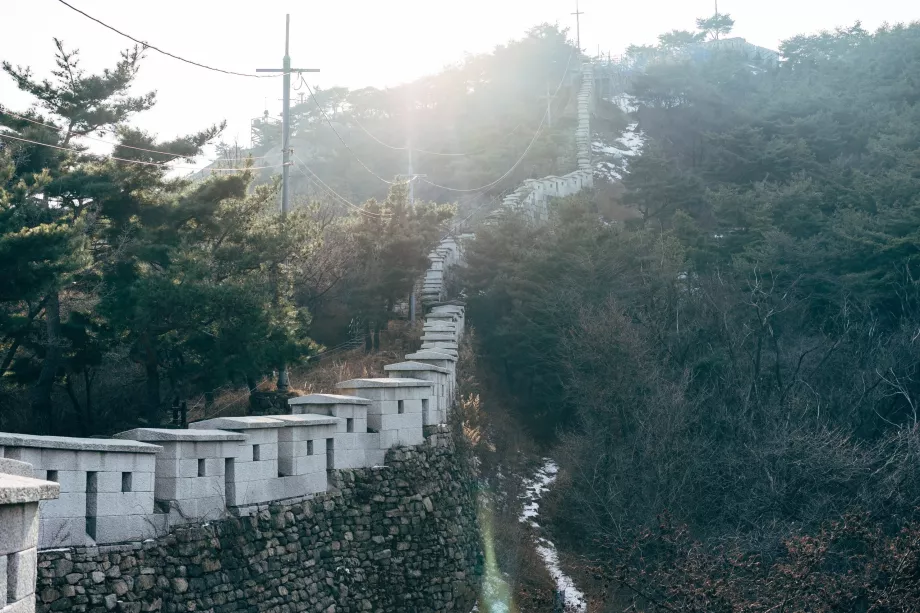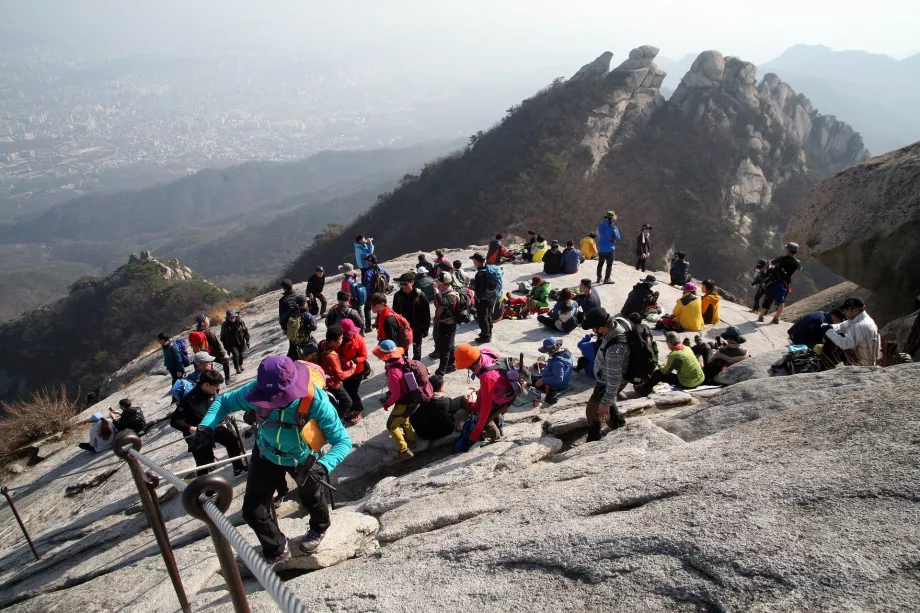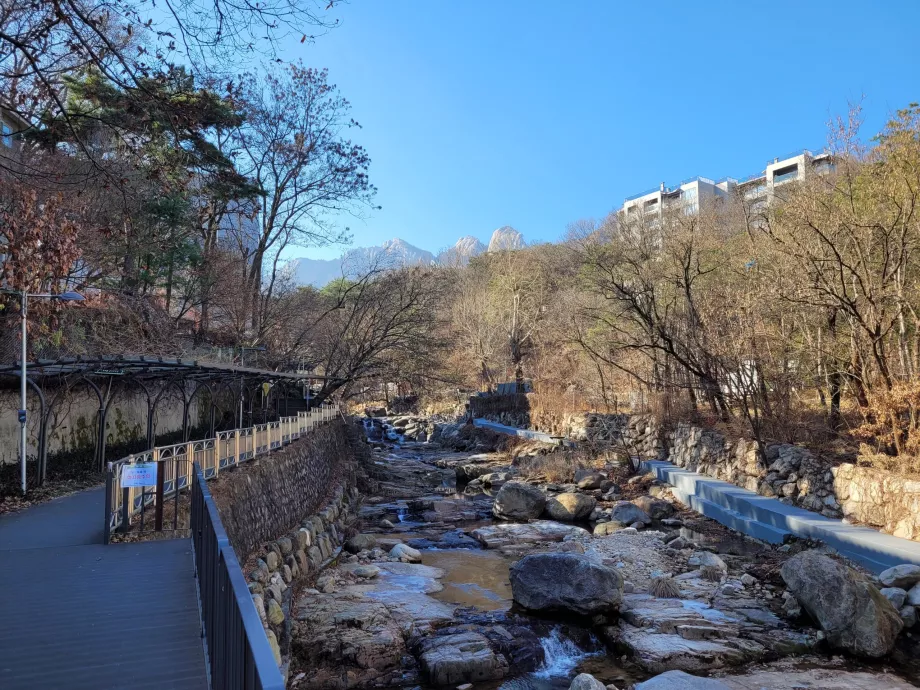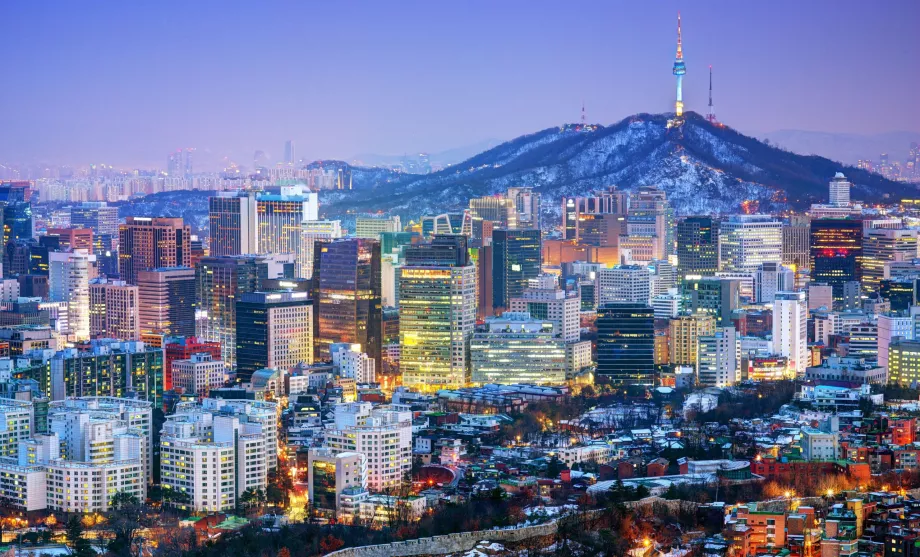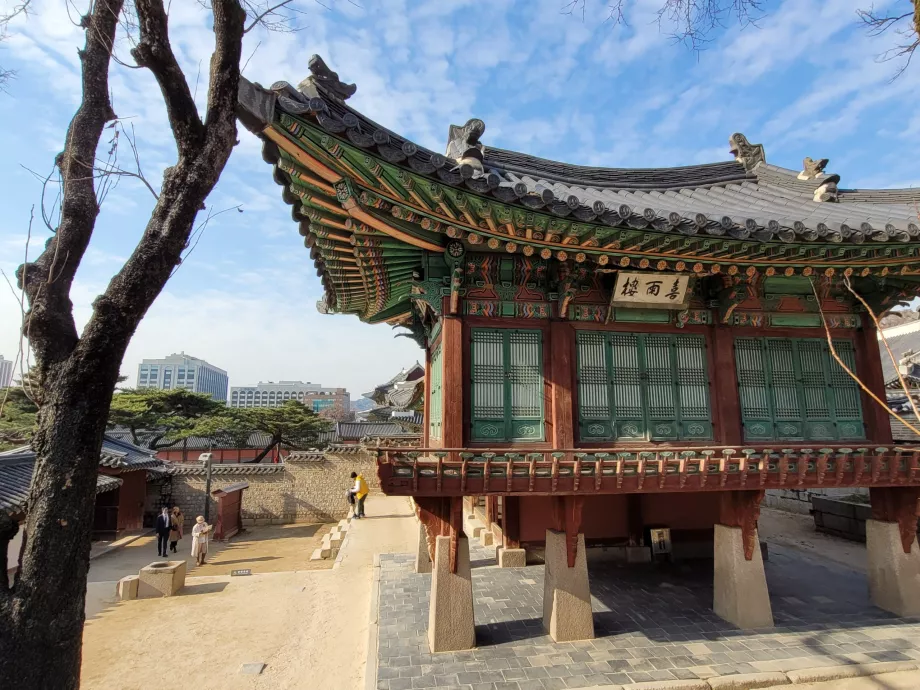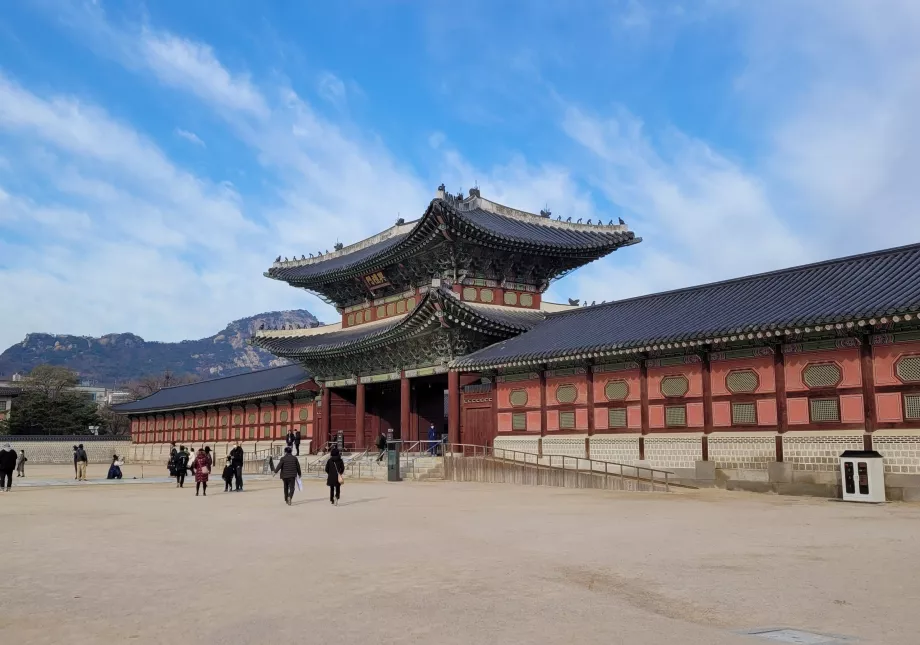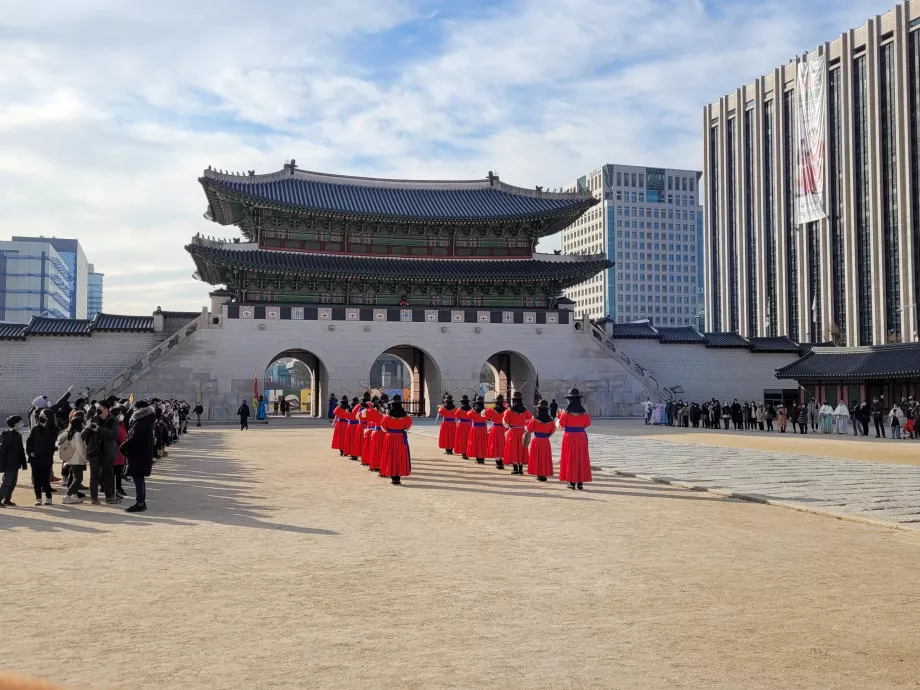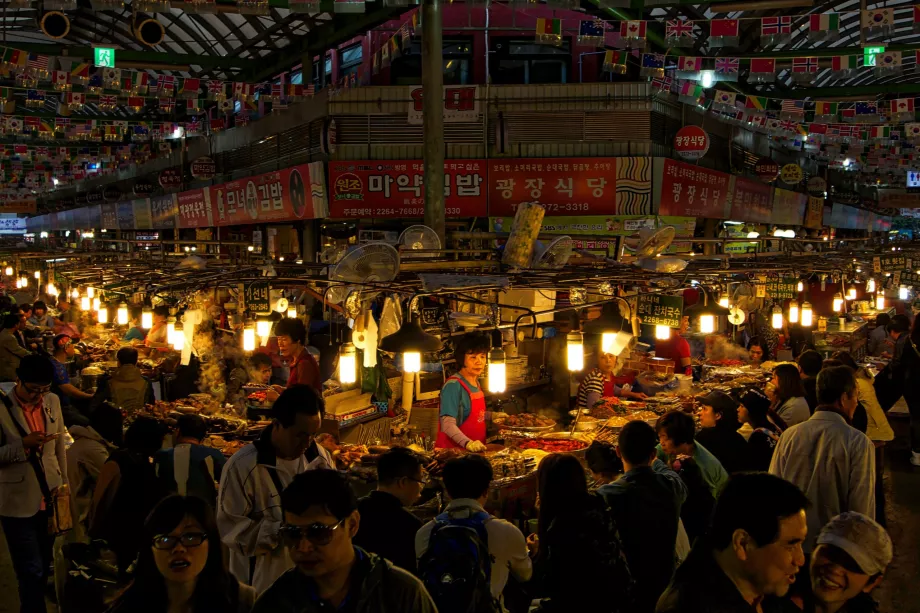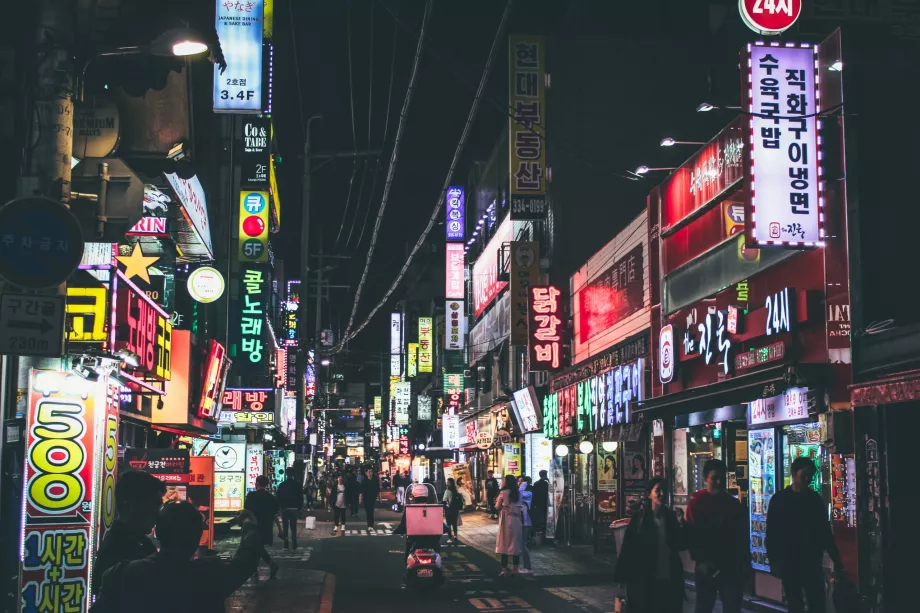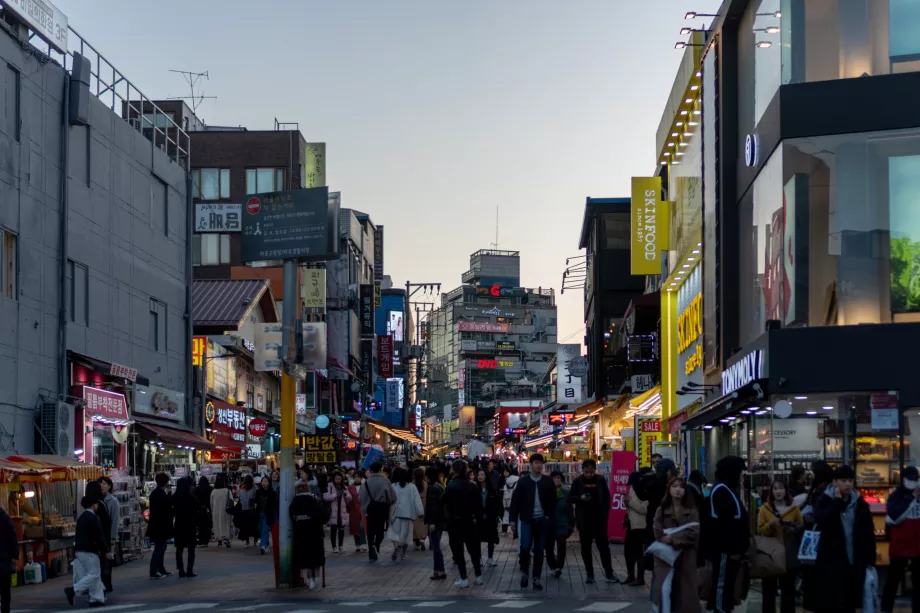What to do in Seoul
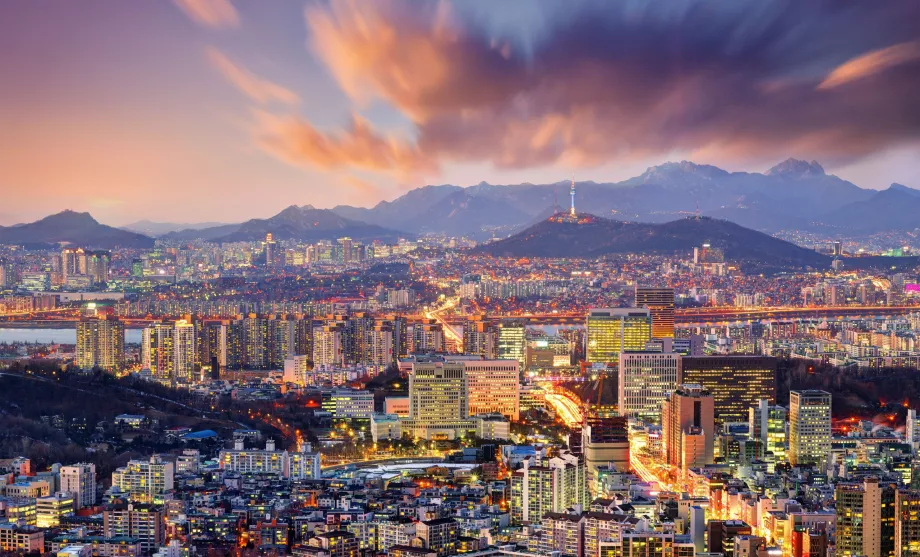
How to have fun in Seoul? Why go to the South Korean capital at all and where to go on excursions from Seoul?
Hiking
Few megapolises as huge as Seoul can have hiking as the number 1 activity. However, Seoul benefits from its location in the densely forested hills, which at times disturb the urban jungle and provide an escape to nature.
In addition, Seoul has well-maintained and marked hiking trails that are a joy to walk on. Comfortable paths with plenty of benches, toilets and maps turn into natural, but still well-marked, trails complete with plenty of safety features as the distance from the centre increases with altitude.
We bring you tips on the best hiking trails in Seoul.
Seoul City Wall Trail
This circular route around the entire city covers over 20km and follows the fortifications and walls of historic Seoul, which are well preserved in many places. Where the walls are not, the Seoul City Wall Trail continues through parks or passes other interesting sights.
The Seoul City Wall Trail is divided into 4 specific shorter routes that go right past the walls. The remaining parts of the Seoul City Trail do not carry any other names and lead outside the walls:
- Nakasan Mountain Trail - A leisurely 2km route along the walls takes you to the park at the top of Nakasan with nice views of the city.
- Heunginjimun Gate Trail[/translate] - a short 1.8km trail designed for the less mobile. It runs entirely on flat ground around the remains of the walls, otherwise more or less through the city.
- Baegak Mountain Trail - The 4.5km trail traverses fairly large elevations (and a long stretch with steep steps), and mostly runs along the walls outside the city. Until 2020, the trail over Bugaksan Mountain was inaccessible due to one of the presidential residences. This section has set opening hours according to the seasons (in winter from 9:00 to 17:00, in summer from 9:00 to 19:00, last entry is possible 2 hours before closing time).
- Inwangsan Mountain Trail - The most challenging 3km section of the Seoul City Wall Tour, with many climbs and staircases, runs practically all along the walls, taking you up into the mountains and offering spectacular views of Seoul. This section is closed every Tuesday, but you can cut the route outside the mountain on a regular street.
- Namsan Park Trail - A fairly challenging 4.7km section climbing to the top of Mount Namsan with the famous N Seoul Tower lookout. There are many stairs and steep climbs/descents. However, the journey up can easily be done by bus or cable car.
The rest of the Seoul City Wall Trail does not have a name of its own.
Bukhansan National Park
The mountain-massive national park protecting Seoul from the north is literally a hiker's paradise. There are dozens of kilometers of trails here, we'll pick out 5 of the most famous.
- To the highest mountain, Baegundae, from the Bukhansan UI automatic metro station - a busy 3.8km route in one direction, with more elevation gain towards the end, but still relatively comfortable
- To the highest mountain, Bagundae from the west - a less used route that is easier and only 3.3 km one way. However, it has poorer accessibility, as you first have to take the orange line 3 metro to Gupabal station and then take bus 34 or 704 for about 15 minutes
- To Dobongsan Mountain - a popular route from the metro station of blue line 1 and dark green line 7 Dobongsan. It is one of the more challenging ones with a higher elevation and a length of 4.5 km one way
- To the Daeseongmun Historical Gate - a less visited area of the park closest to downtown Seoul. The trails here are gentler and easier. Accessible by bus lines 110A + 110B from Bukhansan Bogungmun automatic subway station
- Bukhansan Dulle-gil - over 30km of long-distance trail along the foothills of Bukhansan, weaving through forests in places and through residential areas in others. A little-traveled and very pleasant trail.
Ansan Mountain
The popular Ansan Peak, from where you get a great view of downtown Seoul and Mount Namsan with its TV tower, is crisscrossed with easy trails. The best way to reach the top is from the Dongnimmun station on the Orange Line 3 subway.
Achasan Massif
On the eastern side of Seoul, the small mountain massif of Achasan beckons for walks.
The most popular route runs from Yongmasan metro station of the dark green line 7 through the hills to Gwangnaru station of the purple metro line 5.
Gwanaksan Mountain
There are two major trekking sites in southern Seoul. The larger of the two is the Gwanaksan Hills with several trails. For the most popular route, take the light green subway line 3 to Seoul National University Station, where you transfer to the green buses of lines 5511 or 5513 to reach the terminus.
Over the top of Gwanaksan, you'll then follow a ridge with spectacular views back to the subway, this time to Sadang Station, where light green line 3 and light blue line 4 cross.
Cheonggyesan Mountain
The second area of southern Seoul is Cheonggyesan Hill, a relatively little-visited place with beautiful forests and views. The trailhead is easily accessible and can be found at the Cheonggyesan station of the orange Line 3.
Cheonggyecheon River
The rebuilt riverbed of the city's Cheonggyecheon stream winding right through central Seoul beckons for a beautiful, comfortable and unconventional stroll through the city centre.
In the footsteps of the Joseon Dynasty
Korea's longest reigning royal dynasty, the Joseon Dynasty, is one of Korea's most famous and best-regarded historical periods. The reign of this dynasty lasted from 1392 until the establishment of the Korean Empire in 1897.
At the very beginning of his reign, the Taejo ruler chose Seoul as his seat, with its ideal and strategic location under the mountains on a large river flowing to the nearby sea. Follow in the footsteps of this dynasty that left behind several historical monuments in Seoul.
Five great palaces
The Joseon Dynasty owned five major palace complexes in Seoul over the centuries. To this day, all of them are still well preserved and maintained, and you can visit them all.
The palaces are all under joint UNESCO protection and we have produced separate mini-guides for each:
All palaces are closed on Mondays except for Gyeongbokgung, which closes on Tuesdays.
You can also purchase discounted tickets for all palaces for 10 000 krw, saving 4,000 compared to buying separately.
Other sights
Remnants of Seoul's fortifications from the Joseon Dynasty include the Sungnyemun Main Entrance Gate.
If you have an extra half day, head out to the outskirts of Seoul to the densely forested hills, which hide the emergency fortified Namhansanseong Palace in case of war.
DMZ Tour - a trip to the Demilitarized Zone
The Korean War, fought between 1950 and 1953, completed the total alienation of North and South Korea and the creation of the roughly 4-8 km wide Korean Demilitarized Zone (the abbreviation "DMZ" is almost exclusively used in English) around the entire 248 km long border.
On the South Korean side, the DMZ is a popular tourist destination. With Seoul located only about 30 km south of the border, this city is the starting point for the vast majority of trips to the DMZ, which take an average of 6 to 10 hours.
What to see here? How much do organized trips cost and is it possible to go to the DMZ on your own? What to prepare for? Read the detailed mini-guide to the DMZ.
A trip to see the sights of North Korea
Experience a bit of a bizarre tourist attraction and take a look at North Korea, the mysterious dictatorship and land of destruction, from a safe distance. You don't need to take the rather expensive trips to the Demilitarised Zone, where you also have to go through passport control, to see North Korean villages and mountains.
Compare prices for flights to Seoul
As part of a half-day or full-day trip, you can go on your own from Seoul to 2 sights completely outside the controlled zones, i.e. without passport and other checks.
Odusan Unification Tower
Built in the town of Paju above the confluence of the Han and Imjin rivers, the observation tower is about 2.5 km from the North Korean shore. It stands on the 110-metre-high Odu Hill and is best seen on the other side in winter mornings, as the viewpoint faces northeast.
Odusan Lookout is open from Tuesday to Sunday from 9:00-17:00. It is closed on Mondays. If a public holiday falls on a Monday, it will remain open and the closing day will be Tuesday.
Admission is 3 000 krw.
Take the Gyeongui-Jungang subway line to Geumchon Station, from where you can reach Odusan Lookout by bus lines 033 or 900. From the Tongil Dongsan Observatory stop, you have to walk another 1.5 km or take the free minibus, which runs about every half hour from April to October.
In total, the journey from central Seoul takes about 90-115 minutes.
Ganghwa Peace Observatory
The more remote and therefore considerably less touristy viewpoint is located right at the mouth of the Han River into the sea and was inaccessible until 2008. North Korea is directly across the river less than 2 km away. The best viewing conditions here are in the afternoon.
Odusan Lookout is open from Tuesday to Sunday from 9:00-18:00. It is closed on Mondays. If a public holiday falls on Monday, it will remain open and the closing day will be Tuesday.
Admission is 2 500 krw, and binoculars are 500 krw for 2 minutes.
Transport from Seoul will take a total of about 2.5 hours one way.
From Sinchon Station of the light green metro line 2 (near downtown Seoul), direct bus number 3000 (17-20 minute interval) runs to Ganghwa.
At Ganghwa Bus Station, you can then just transfer to bus line 26, 27 or 28 and drive about 30 minutes more to the Pyeonghwa Observatory stop. In total, the trip will cost you around 4 500 krw.
Discover Seoul's markets and souks
Even though Seoul is one of the world's wealthiest metropolises, shopping habits don't change and you won't find many large supermarkets here. Koreans still mostly shop at outdoor and indoor markets, of which there are dozens, maybe hundreds, in Seoul.
You'll find a larger or smaller market in just about every major square. In some places you'll find only electronics, in others office supplies, groceries, fish, clothes...
Where can you find the most famous markets in Seoul?
- Gwangjang - indoor food and street food market
- Namdaemun - an outdoor market open 24 hours with daily necessities for locals and bars for tourists
- Myeongdong - the central district, which is practically all one big upmarket market
Nightlife
Seoul may not be a metropolis known for its nightlife, but it does offer several neighborhoods that pulse with life until the wee hours of the morning. Moreover, the bars and clubs in these neighborhoods are lively throughout the week, except for Sunday nights when they are often closed.
Where to go for nightlife in Seoul?
- Hongdae Street (map) - Just next to the Hongik Unveristy subway station is a huge student district, which is matched by the entertainment on the local main street, Hongdae. This neighbourhood is a young person's paradise. Local bars offer cheap drinks by local standards and Hongdae is extra popular for its underground music scene, hip-hop clubs and street art.
- Itaewon (map), a neighborhood of original low-rise housing through which the brown Line 6 subway line runs, is popular with a wide range of locals and tourists. Here you will find many international restaurants, rooftop bars, and even gay bars.
- Gangnam, the eccentric district that was the subject of one of the most famous music hits, Gangnam Style, offers a wide range of entertainment options, in three main locations:
Han River cruise
The surprisingly mighty Han River (Hangang in Korean) flows through Seoul, offering spectacular views, especially of modern high-rise developments.
Seoul has one major cruise operator , E-land Cruise. Several cruises of varying lengths from 40 minutes to 70 minutes are available every day except Monday. You can choose a classic day cruise or a night cruise with dinner on board.
All cruises are circular: they start and end at the Yeouido dock (map) near Yeouinaro metro station (purple line number 5).
Prices vary between 16 900 krw and 30 000 krw depending on the type of cruise.
Official website (in Korean only): elandcruise.com
Trip to Hwaseong Suwon Fortress
To experience more historical sites from the Joseon Dynasty, take a half-day trip outside of Seoul to the city of Suwon, where you'll visit Hwaseong Fortress, surrounded by more than 5.5km of ramparts.
After Seoul's palaces, Hwaseong Suwon Fortress is one of Korea's most visited landmarks.
Rent a bike
Seoul creates absolutely ideal conditions for cycling, especially along the waterways, where numerous and high-quality cycle paths have been built.
The two banks of the Han River are, of course, the most popular for cycling, offering panoramic views of the whole of Seoul. You can cycle dozens of kilometres a day on both sides of the river as far as your legs will take you. Bike paths run practically the entire length of the river to the outskirts of Seoul.
Bicycle rental shops are very common in the moha parks along the coast. No need to book anything in advance, just come and ride. You'll find rentals in practically every park on both sides of the Han River.
For an hour's bike hire you pay 3 000 krwand every additional 15 minutes for 500 krw.
Any questions left?
If you have any questions or comments about the article...

